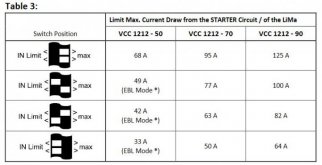Hi,
I want to install a Votronic B2B charger for my new camper-Van. It's available in a 30, 50, 70 and 90A Version. But most workshops and camper-manufacturers here in Germany only use and advise the 30A Version. But for my planed 280AH lifepo4 the loading-Time seems much too long for me.
The electric-guy from my workshop means that a big b2b Charger will harm the alternator, reduce the lifetime of the Lifepo4, and also the charger itself will not last for long. But for me, it seems like he just doesn't want to do install something else like he always does. I want to buy a Peugeot Boxer, maybe better known as RAM Promaster in the USA.
What's your opinion on this Topic? Do you have experience with "big" b2b Chargers?
Thanks a lot and sry for my awkward English
Dominic
I want to install a Votronic B2B charger for my new camper-Van. It's available in a 30, 50, 70 and 90A Version. But most workshops and camper-manufacturers here in Germany only use and advise the 30A Version. But for my planed 280AH lifepo4 the loading-Time seems much too long for me.
The electric-guy from my workshop means that a big b2b Charger will harm the alternator, reduce the lifetime of the Lifepo4, and also the charger itself will not last for long. But for me, it seems like he just doesn't want to do install something else like he always does. I want to buy a Peugeot Boxer, maybe better known as RAM Promaster in the USA.
What's your opinion on this Topic? Do you have experience with "big" b2b Chargers?
Thanks a lot and sry for my awkward English
Dominic



